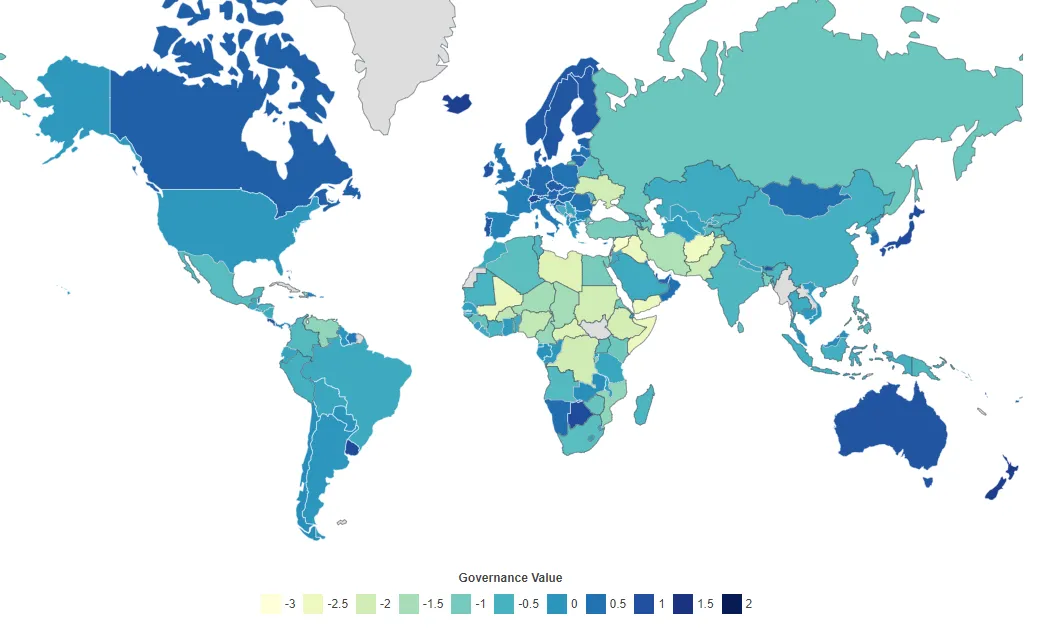With each tech breakthrough, companies are always on the lookout for innovative ways to enhance both their mobile and web software development processes. In this context, nearshore development outsourcing has emerged as a strategic approach that bridges the gap between onshore and offshore outsourcing by utilizing geographically nearby locations.
But what exactly does all this mean? What are the benefits, challenges, and best practices? Is it worth considering? In this guide, we’ll break down the key aspects of nearshore software development to help you make smart decisions for your business.
Ready to elevate your software development? Get in touch and find out how our nearshore services can drive your business forward!
Understanding nearshore development
Navigating software development in a globalized world can be complex, but the nearshore model simplifies the process. Let’s get started answering the most common questions!
What is the nearshore model?
The nearshore model is a strategic approach to outsourcing that involves partnering with companies in nearby countries or regions. It leverages the benefits of proximity, such as similar time zones, cultural affinities, and aligned business practices, to enhance communication and collaboration.
By working with nearshore partners, businesses can achieve cost-effective solutions, improve project efficiency, and maintain high-quality standards without the challenges associated with significant time zone differences and cultural barriers.
What is nearshore software development?
Nearshore software development specifically refers to outsourcing software development tasks to a company located in a nearby country or region. This approach combines the advantages of the nearshore model with the specialized skills and expertise of custom software development teams, to provide high-quality services at a lower cost.
By choosing this model, IT businesses can benefit from improved communication, faster turnaround times, and a more seamless integration of development processes, all while maintaining high-quality standards and reducing costs.
Key features of the nearshore software development
-
Geographical proximity: Nearshore software development services offer geographical proximity, which enables real-time collaboration and quick feedback. This reduces delays and misunderstandings, making the development process more efficient and productive.
-
Time zone alignment: Hiring nearshore developers teams with similar time zones enables synchronous communication. This helps to mitigate communication barriers and time zone issues, making it a more viable option compared to traditional offshore outsourcing methods. This is particularly beneficial for US companies seeking skilled professionals from Latin America, where there is a greater availability of expert teams.
-
Cultural similarities: Sharing similar cultural values and work ethics, nearshore development companies make it easier for businesses to communicate and collaborate effectively. This cultural alignment fosters better teamwork and understanding, leading to higher-quality outcomes.
-
Cost efficiency: Nearshore software development outsourcing offers cost savings without compromising on quality. By outsourcing to nearby countries, companies can reduce their operational costs while still benefiting from the expertise of skilled professionals.
-
Access to skilled, talented teams: Nearshore development companies provide access to a pool of skilled and experienced software developers, designers, and project managers. Their talent can help businesses achieve their software development goals efficiently and effectively.
-
Control over project scope: The nearshore software development model enables companies to maintain close communication with the development team. This allows for quick feedback and adjustments, enabling the final product to meet their expectations and project requirements.
By leveraging these key features, businesses can optimize their software development processes and achieve high-quality outcomes.
What is the difference between offshore and nearshore software development?
Offshore software development involves outsourcing tasks to geographically distant countries, which often leads to challenges such as significant time zone differences and potential communication barriers. This can make real-time collaboration difficult and may require more effort to manage cultural differences. In contrast, as was said, being geographically closer, nearshore software development partners facilitate more frequent and effective communication. How? Through online meetings, easier travel for in-person meetings, and a better understanding of cultural nuances, resulting in a more seamless and efficient collaboration process.
Challenges of nearshore software development

Despite its advantages, nearshore software development comes with its own set of challenges. Communication barriers, though less pronounced than in offshore outsourcing, can still be an issue. Managing projects across borders requires robust processes and tools. Checking the quality of work and aligning expectations are also critical challenges. So skilled software engineers and leaders play a vital role in addressing these barriers and project management challenges.
Let’s break it down:
🔴 Cultural Differences: While cultural similarities can enhance collaboration, differences in work culture and communication styles can still lead to misunderstandings.
How can you manage cultural differences?
Our advice: Invest in cultural training and set up clear communication protocols to bridge cultural gaps and avoid misunderstandings.
🔴 Data security and compliance: Keeping your data secure and compliant is essential. Nearshore software development companies must stick to strict data protection regulations and implement strong security measures to protect sensitive information.
What steps should you take to boost data security?
Our advice: Check compliance with data protection regulations and do thorough due diligence on potential partners to verify their security measures.
🔴 Managing projects across borders: Managing projects across borders requires solid processes and tools. Effective project management is key to smooth collaboration and addressing communication barriers.
What’s the best way to handle this?
Our advice: Use robust collaboration tools and agile practices to keep everyone aligned and maintain smooth communication. Focus on continuous feedback and adaptability to foster effective cross-border teamwork.
Work together
Don’t forget, nearshore software developers are key to overcoming these challenges and driving your project’s success. By tackling these issues together with your new partner, you can optimize your nearshore software outsourcing process and achieve top-notch results.
Selecting the right nearshore software development company

Choosing the right nearshore software development company is crucial for success. A thorough evaluation of key aspects will help in selecting a partner that aligns with your business goals and requirements.
Let’s dive into these elements!
Selection criteria
Experience and expertise:
- Look for companies with a proven track record of delivering successful projects in your industry.
- Make sure they have the skills and knowledge to meet your specific needs.
Communication and collaboration:
- Check out how well the company communicates and collaborates.
- Pick a partner that is responsive and proactive to keep things running smoothly and handle any issues quickly.
Technological infrastructure:
- Assess the company’s tech setup to see if it matches your needs, including the quality of internet and electricity.
- Consider their ability to adopt new tools and platforms to drive innovation and efficiency.
Political stability:
- Think about the political stability of the country where the nearshore company is based.
- A stable environment can boost the reliability and continuity of the services provided.
Questions to ask potential partners
To find the best nearshore software development partner, it’s important to ask the right questions. These will help you understand their experience, communication skills, and ability to meet your needs.
- What is your experience in our industry?
- How do you maintain effective communication?
- Can you share examples of successful projects
- How do you handle scalability and flexibility?
By considering these criteria and asking the right questions, you can find a nearshore software development partner that aligns with your goals and requirements.
How Seta Workshop meets these criteria
-
At Seta Workshop, we pride ourselves on our extensive experience and expertise. We’ve successfully delivered numerous projects across various industries. We invite you to check out our Clutch profile and clients’ reviews to see what our clients have to say about us.
-
When it comes to communication, transparency is at the heart of everything we do. As a boutique company, we value the relationship with each client, providing personalized attention and enabling smooth and easy collaboration. Our responsive and proactive approach helps keep projects on track and swiftly addresses any issues that arise.
-
In terms of technological infrastructure, we use the best technologies available for software development. Our team is adept at adopting new tools and platforms, driving innovation and efficiency in every project we undertake.
- Lastly, our team is based in Uruguay, a country known for its political stability. This stable environment enhances the reliability and continuity of the services we provide, giving you peace of mind that your projects are in good hands. Moreover, being in the GMT-3 time zone, Uruguay is typically one to two hours ahead of New York (depending on daylight saving time), making it ideal for real-time collaboration with North American companies.
Get in touch with us to streamline your development and achieve your business goals with confidence.
Uruguay, top nearshore software development country
 Image: World Population Review’s 2024 map
Image: World Population Review’s 2024 map
When considering nearshore software development, choosing the right region is crucial. Latin America is a popular nearshore software development region, offering a wealth of skilled talent professionals and favorable business conditions.
Today, we’ll focus on Uruguay. As you can see on the map, Uruguay stands out in South America with its deep blue color. It’s a small but growing tech industry with highly skilled professionals.
Why Uruguay stands out from other Latin countries
Uruguay has been making waves in the tech industry, and for good reason. Here are some key factors that make Uruguay an ideal destination for nearshore software development:
- Political stability: Uruguay is known for its political stability, which provides a secure environment for business operations. According to the World Population Review’s 2024 map, Uruguay scores a governance value of 1.1 and is placed in the 88th percentile globally. This showcases its high level of stability compared to other countries in the region.
This distinction underscores Uruguay’s secure environment for nearshore software development, offering a reliable setting for businesses seeking stability in Latin America.
- Highly skilled workforce: Uruguay boasts a highly educated and skilled pool of experts. The latest data available shows that Uruguay maintains a high literacy rate of around 98.7%, according to the World Bank.
Uruguay places a particular emphasis on science, technology, engineering, and mathematics (STEM) education. The country’s education policies focus on fostering skills needed for the new era. This, along with a proficient English-speaking workforce, positions Uruguay as a hub of highly skilled professionals suitable for international business.
- Tech export boom: According to the Uruguayan Chamber of Information Technology (Cuti), its IT sector has become one of the country’s main economic drivers.
Cuti’s report highlights: “The sector’s business volume has been increasing faster than the country’s GDP… This growth has been largely driven by exports, which accounted for 65% of the sector’s business volume (compared to 35% in 2000). Consequently, the IT sector has secured its position among the country’s top 5 export chains, with the United States and the United Kingdom as its primary markets.”
-
Connectivity and sustainability: Uruguay boasts one of the highest internet speeds in Latin America, providing seamless connectivity for tech operations. Additionally, the country has a robust electrical system with a very high percentage of renewable energy, making it a sustainable and reliable choice for businesses. You can check this data on Statista and the World Bank web page.
-
Cultural similarity: Uruguay shares many cultural similarities with North America, particularly in its emphasis on professionalism, direct communication, and a collaborative work style. The country’s workforce is familiar with international business practices, and there’s a shared appreciation for work-life balance, open feedback, and innovative thinking. This cultural alignment helps foster strong working relationships and smooth project execution.
-
Cost-effectiveness: While offering high-quality services, Uruguay remains cost-effective compared to other regions. This balance of quality and affordability makes it an attractive option for businesses looking to optimize their software development processes. Uruguay’s cost-effectiveness is further enhanced by its government incentives for the tech industry, enabling businesses to benefit from quality services at a fraction of the cost compared to other nearshore or offshore locations.
Key elements for successful nearshore collaboration

Okay, you’ve finally made it here. After extensive research, you’ve chosen your nearshore partner. Now, let’s talk about how to maximize this partnership.
Creating a successful collaboration with a nearshore software development team involves a comprehensive approach that includes:
- Effective communication
- Legal and compliance considerations
- Team integration
- Measuring success
- Cost analysis
Let’s explore the key elements that will help you build a productive and collaborative relationship with your nearshore team.
1. Effective communication
Collaborative tools and effective communication are key to the success of nearshore software development projects
To enhance communication, it’s important to establish clear communication protocols and channels. This implies defining the frequency and format of meetings, as well as the tools and platforms to be used for communication. Regular check-ins and status updates can help to keep everyone on the same page and ensure that any issues are addressed promptly.
In addition to communication tools, it’s highly relevant to foster a collaborative culture within the development team. Encourage open communication and feedback, and create opportunities for team members to collaborate and share ideas. This can help to build trust and strengthen the working relationship between the nearshore software development team and your internal team.
Core practices
- Regular check-ins: Schedule frequent meetings to stay aligned.
- Clear protocols: Define communication channels and formats.
- Open feedback: Encourage open and honest communication.
- Collaborative tools: Use tools like Slack, Zoom, Jira, and Discord.
By implementing these best practices, companies can achieve effective communication and collaboration with their nearshore software development teams.
2. Legal and compliance considerations
When you dive into nearshore software development, it’s essential to keep legal and compliance considerations in mind. Think of protecting your intellectual property (IP) as safeguarding your most valuable assets. Having strong IP protection clauses in your contracts is a great start. But that’s not all. Data security and privacy are equally important. You want to make sure your nearshore partner is on the same page, following global and local regulations to keep your sensitive information safe. By addressing these aspects, you can focus on what you do best, knowing your legal bases are covered.
Each country has its own set of laws and regulations governing software development and data protection. Partnering with a nearshore company that knows these regulations thoroughly helps confirm compliance and necessary certifications.
Additionally, considering the potential legal risks and liabilities is equally important. Picture aspects like contract enforcement, dispute resolution, and liability for data breaches or other security incidents. Collaborating with legal experts to draft comprehensive contracts can help you navigate these challenges and protect your interests.
Legal checklist
- IP protection: Make sure your contracts have robust IP clauses.
- Data security: Comply with data protection regulations.
- Regulatory environment: Understand the legal landscape of the nearshore destination.
- Risk management: Address potential legal risks and liabilities.
Once you’ve navigated the legal and regulatory landscape and chosen the right nearshore partner, the next step is integrating them into your existing processes. This phase is crucial for achieving a smooth and productive collaboration.
3. Team integration
Bringing a nearshore software development team into your existing processes can be a game-changer, but it requires thoughtful planning and execution. The goal is to create a seamless integration that aligns with your company’s objectives and fosters a collaborative environment.
Let’s explore step-by-step how to make this transition as smooth as possible.
Establish an onboarding process:
- Start with a comprehensive onboarding process that includes training and orientation.
This helps the new team understand your company’s culture, tools, and workflows.
Define roles:
- Clearly outline responsibilities to avoid confusion.
- Set the stage for effective collaboration by making sure everyone knows their role.
Foster collaboration:
- Encourage open communication and feedback.
- Create opportunities for team members to collaborate and share ideas.
- Define the tools and platforms to be used for communication, as well as the frequency and format of meetings.
This helps build trust and strengthens the working relationship between the nearshore software development team and your internal team.
4. Measuring success
Measuring the success of nearshore software development projects involves tracking key performance indicators (KPIs). These include metrics like project completion time, defect rates, and customer satisfaction. Regularly reviewing these metrics helps assess the effectiveness of the nearshore partnership and make necessary adjustments to improve performance.
To measure success, it’s important to establish clear goals and objectives at the outset of the project. Define the KPIs to track progress and regularly review them to make any necessary adjustments.
Additionally, conducting regular performance reviews with your nearshore software development partner can help identify any issues or areas for improvement, enabling the project stays on track. Regular feedback and communication are key to maintaining a successful nearshore partnership.
KPIs to track
- Project completion time: Measure the time taken to complete the project.
- Defect rates: Track the number of defects found during testing.
- Customer satisfaction: Gather feedback from customers on the quality of work.
- Communication efficiency: Assess the effectiveness of communication between teams.
- Cost savings: Evaluate financial savings achieved through nearshoring.
By tracking these KPIs, companies can measure the success of their nearshore software development projects and make informed decisions to improve performance.
5. Cost analysis
A detailed cost comparison between nearshore, offshore, and onshore outsourcing can provide valuable insights. Nearshore options often offer a balance between cost savings and quality. However, be aware of hidden costs. A comprehensive cost analysis will help in making an informed decision.
Cost comparison
- Nearshore Outsourcing: Balance between cost savings and quality.
- Offshore Outsourcing: Potential hidden costs such as travel and training.
- Onshore Outsourcing: Higher costs but easier communication and control.
By conducting a thorough cost analysis, companies can make informed decisions about the most cost-effective outsourcing model for their needs.
The bottom line - Nearshore software development services
Nearshore software development presents a compelling option for companies looking to optimize their processes. By leveraging geographical proximity, cultural similarities, and time zone alignment, nearshoring offers a balanced solution that combines cost-effectiveness with efficiency.
Selecting the right partner, fostering effective communication, and integrating best practices are key to unlocking the full potential of nearshore software development.
Partnering for your growth

At Seta Workshop, we specialize in nearshore software development, leveraging our strategic location in Uruguay to offer outstanding, personalized services. We are passionate about details and actively dedicate ourselves to nurturing strong relationships with our clients and fostering lasting bonds.
Our proximity to North America and cultural alignment enables us to provide seamless communication and collaboration, boosting efficient and effective project delivery. Our team of skilled developers is well-versed in the latest technologies and agile methodologies, allowing us to deliver high-quality software solutions that drive your business forward.
By choosing Seta Workshop as your nearshore software development partner, you gain access to a dedicated team committed to excellence, transparency, and continuous improvement.
Get in touch with us to streamline your development and achieve your business goals with confidence.

